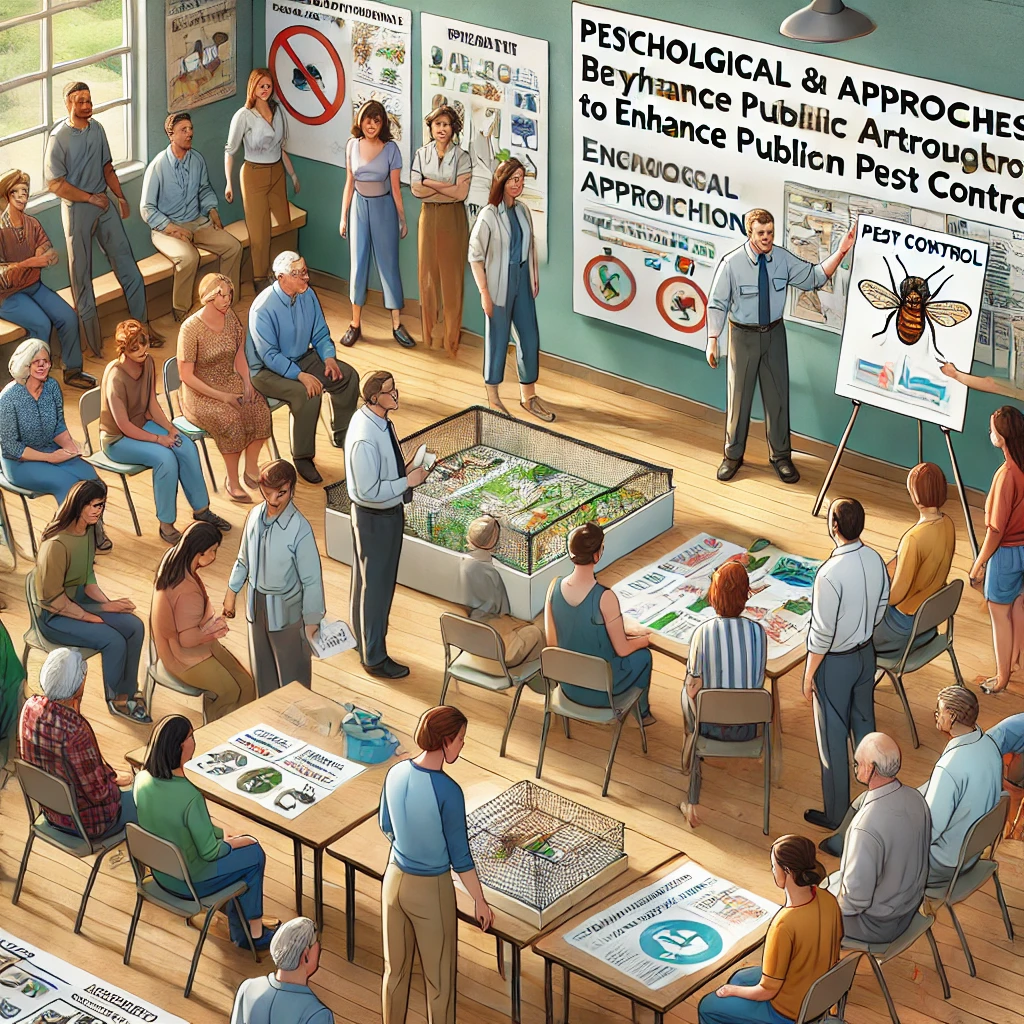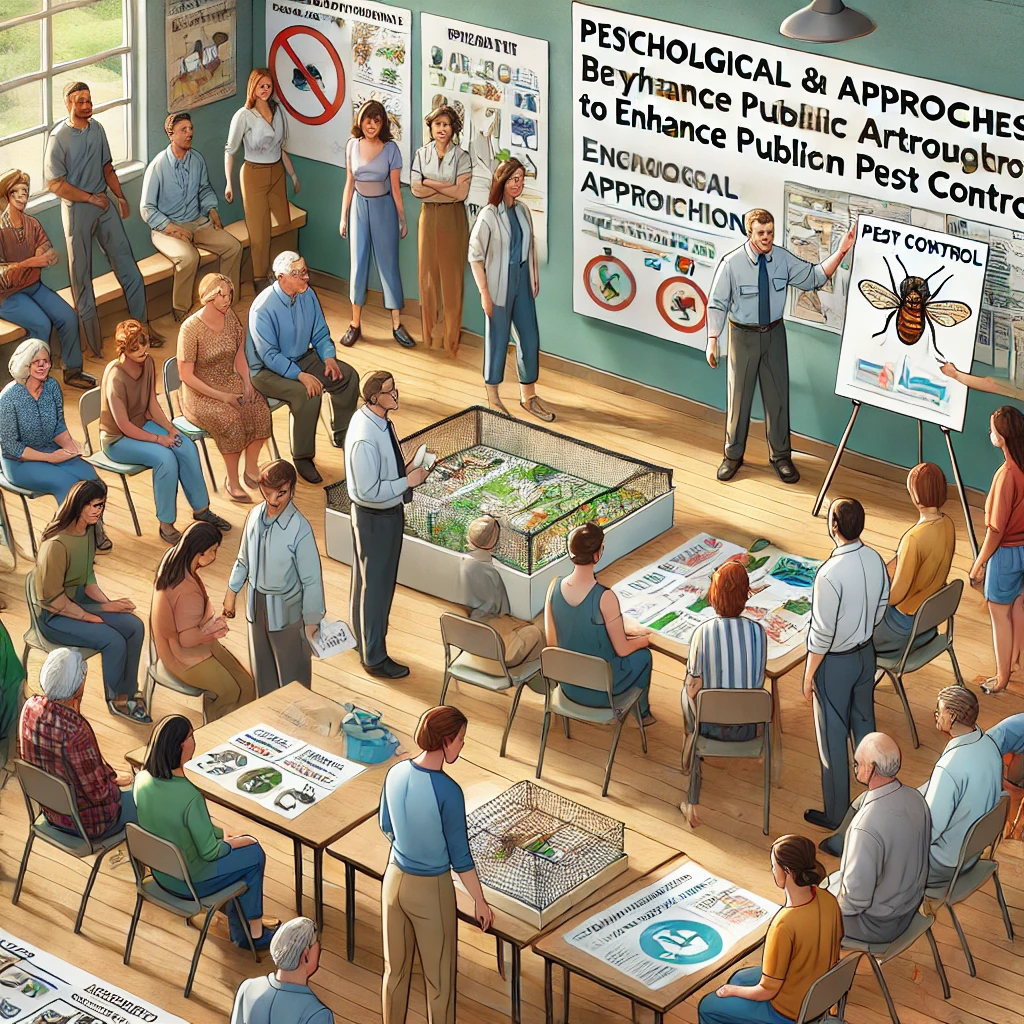
Introduction
Effective pest control often requires public participation, especially in urban and community settings where pest management efforts must be coordinated. Psychological and behavioral approaches can significantly enhance public involvement by influencing attitudes, beliefs, and behaviors related to pest control. This essay explores how understanding human behavior and applying psychological strategies can improve public engagement in pest management initiatives.
Understanding Public Perception of Pest Control
Public perception of pest control is shaped by various factors, including awareness, attitudes, beliefs, and cultural practices. Many people may not fully understand the risks associated with pests or the importance of community-wide participation in pest management. Additionally, there may be misconceptions about the effectiveness and safety of different pest control methods, leading to resistance or lack of engagement.
- Awareness and Knowledge: Increasing awareness about the health risks and economic impacts of pests can motivate individuals to take action. Educational campaigns can provide information about pest behavior, the benefits of integrated pest management (IPM), and safe practices for pest prevention and control.
- Attitudes and Beliefs: People’s attitudes towards pest control are influenced by their beliefs about pests and the perceived risks of control measures. Addressing these beliefs through targeted messaging can help shift attitudes in favor of active participation.
- Cultural Influences: Cultural beliefs and practices can affect how communities perceive and respond to pests. Understanding these cultural factors is essential for designing effective pest control programs that respect local customs and encourage community involvement.
Behavioral Approaches to Enhance Participation
- Behavioral Change Models:
- The Health Belief Model (HBM): This model suggests that individuals are more likely to engage in pest control behaviors if they perceive themselves to be at risk of harm from pests and believe that taking action will reduce this risk. Public health campaigns can use this model to emphasize personal susceptibility and the benefits of proactive pest management.
- Social Norms Theory: Social norms strongly influence behavior. Promoting pest control as a community norm can encourage people to participate.
- Incentives and Rewards: Offering incentives, such as discounts on pest control services or rewards for reporting infestations, can motivate people to take action. Behavioral economics suggests that even small rewards can significantly influence behavior, making people more likely to engage in pest control efforts.
- Nudging Techniques: Nudging involves subtle changes to the environment that encourage desired behaviors without restricting choice. For example, providing easy access to pest control resources, such as traps and educational materials, can nudge individuals towards taking preventive measures. Simple reminders, such as community notices about pest risks and recommended actions, can also be effective.
- Education and Training: Hands-on education and training programs that teach people how to identify pests, understand their behavior, and apply safe control measures can empower communities. Workshops, demonstrations, and interactive sessions can build skills and confidence, making people more likely to participate in pest management activities.
Leveraging Technology and Social Media
- Digital Engagement: Social media and mobile apps can be powerful tools for engaging the public in pest control efforts. Digital platforms can disseminate information quickly, share success stories, and foster a sense of community around pest management. Apps can provide real-time updates on pest activity and offer tips on prevention and control.
- Crowdsourcing and Reporting: Technology can facilitate crowdsourced reporting of pest sightings and infestations, allowing communities to map pest hotspots and coordinate control efforts more effectively. Engaging the public in data collection creates a sense of ownership and responsibility, enhancing participation.
Building Trust and Collaboration
- Transparency and Communication: Open communication about pest control plans, potential risks, and the safety of methods used is essential for building trust. Involving the public in decision-making processes and providing regular updates can foster transparency and collaboration.
- Partnerships with Local Organizations: Collaborating with local organizations, such as schools, businesses, and community groups, can help extend the reach of pest control initiatives. These partnerships can amplify messages, provide additional resources, and encourage broader participation.
Conclusion
Enhancing public participation in pest control requires a comprehensive understanding of psychological and behavioral factors that influence human behavior. By applying behavioral change models, leveraging technology, offering incentives, and fostering collaboration, communities can improve engagement in pest management efforts.

